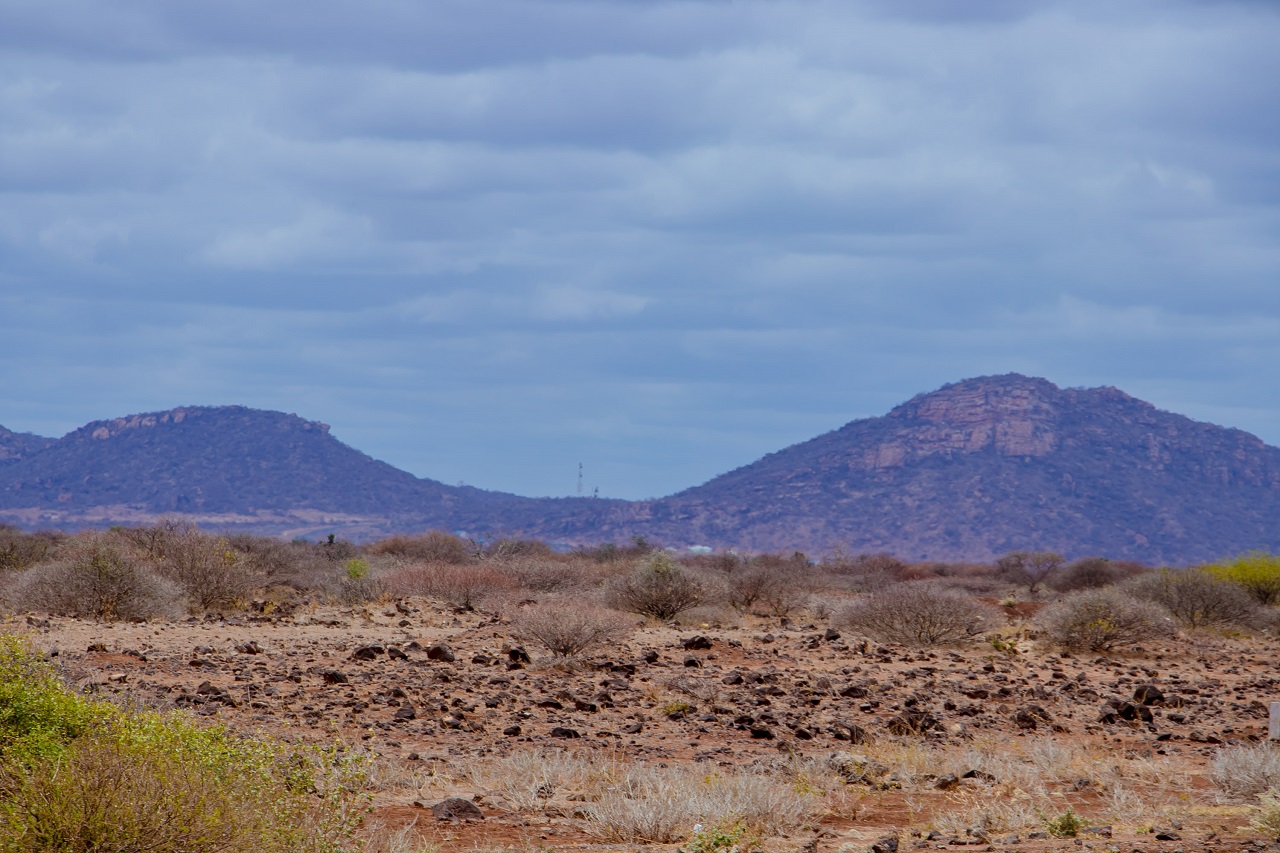
Pictures showing the Arid and semi-arid region of Northern parts of Kenya. The Research by Egerton University led by Agro-Science Park Director Professor Paul Kimurto is to find crops that can do well in such areas. (Photo: Kurian Musa/ Egerton University)
According to a report prepared by FAO, Egerton University, and Turkana County Government, Turkana County has the potential for mass production of high-value crops,
The report recommends both irrigated areas of over half a million acres with over 20 irrigation schemes and rainfed agricultural areas.
The recommended crops with high yields and are highly adaptable to the area included groundnuts (Mwangaza and Ndovu), Sunflower, Soya beans, Cowpeas, Local and improved sorghum (Elkari, EUSV1), Watermelon (F1 sukari), Tomatoes (Rio Grande) and Green grams.
Turkana County Government, Egerton University, and the Food and Agriculture Organization (FAO) jointly conducted a two-year piloting program that identified several irrigation schemes managed by both National Irrigation Authority-NIA, led by Eng Felix Sheundu which include Kangalita, Nanyee, Kotela, Naipa, Nawapeto, Katilu, Nakwamoru, Morulem, Lokubae, Elelea, and Nadoto irrigation schemes among others as potential schemes with suitable soils, and water supply.
Related News: Young Kitui farmer proves they’re millions in arid vegetable farming
Related News: Kilifi farmer banks on pineapples as season’s low-cost money maker
The study involved 39 major irrigated/agricultural sites in Turkana West, Turkana East, Loima, and Turkana Central sub-counties and irrigation schemes in Loima and Turkana Central sub-counties along Turkwel River and in Turkana East along Kerio River and rainfed areas in Turkana West sub-counties.
Focus was given to production areas around Kalobeyei Refugee Settlement and selected host community sites. Once fully exploited, this will drastically reduce the perennial food and nutritional insecurity, hunger and famine witnessed in Turkana County frequently.
Turkana County Government Deputy Director for Agriculture Victor Lochee, speaking at Lokichoggio, outlined the department’s plans on increasing the acreage for crop production and singled out the Mathenge (Prosopis Juliflora) invasion in most irrigation schemes as the greatest challenge that has slowed down production. The solution, he said, requires a multi-sectoral approach from the County Government and the private sector in mobilizing adequate resources that can be used to uproot the Mathenge plant.
Other challenges that needed attention according to the report were the non-utilization of productive land that is wasted and has the potential to be lost completely due to Mathenge invasion, neglect of productive land by the owners, and destruction by floods and livestock.
Director Lochee appreciated Egerton University and FAO for facilitating the two-year research and assured of the government’s readiness to implement the findings. He asked for more support towards the realization of the County’s agenda on food security. He informed the conference participants of the new Governments plans headed by Governor Jeremiah Ekamais Lomorukai Napotikan to stock over 2000 bags of staple foods for food reserve.
Egerton’s University team lead and Project PI, Professor Paul Kimurto acknowledged and appreciated the opportunity and space given to them by the County Government of Turkana and FAO to carry out research, crop trial piloting, cost-benefit analysis (CBA), the potential for mechanization and deployment of hand-held motorized equipment and also the capacity building of extension staff and establishment of community seed systems for sustainable seed supply. Prod Kimurto assured of the institution’s readiness to continue widening research partnerships with all stakeholders in the County, including Turkana University, NIA, and processors including INSTA Processors Company Ltd, EPZ Nairobi.
Related News: 40 refugees in Turkana set to up vegetable production after training
He noted that groundnut had low Aflatoxin of between 2-4pbb which is within the European and export standards which should be below 10pbb.
Elizabeth Kamau the Program lead from FAO thanked Egerton University for the good research and presentation of good results during the workshop. She called for the involvement of youth and women in the lucrative business of groundnut production, value addition, soybean and sunflower oil extraction, mechanization services including tractor services, groundnut shelling, and contract farming under community seed systems. She also underlined the need to upscale the current subsistence crop production in Turkana to commercial level and agro-processing level.
She thanked IKEA Foundation and European Union for funding the projects which support value chain development within the Kalobeyei Integrated Social and Economic Development Program (KISEDP) which hosts about 3,20000 Kakuma Refugees and Turkana Host community.
Courtesy: Egerton University